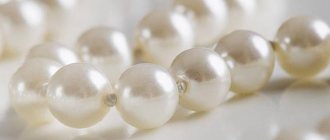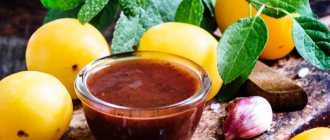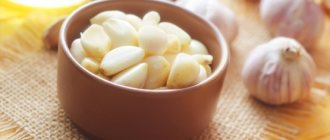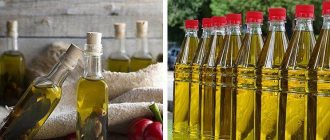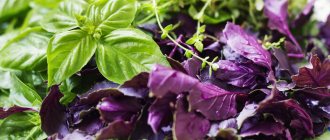Tatyana Khan loves raisins very much
Last week I bought a kilo of loose dried grapes. On the very first day I baked cupcakes with raisins. I washed the remaining product and dried it on a towel, and then put it in a food bag and put it in the kitchen cabinet. The children took out and ate the sultanas from time to time, but yesterday they noticed a strange taste.
I poured the product onto a tray to sort through and found a lot of spoiled berries. Mold appeared in places. I had to throw everything away. After that, I began to look for information on how to properly store raisins at home. I want to share with you the collected material.
Storage containers for drying grapes
On production packaging, the shelf life for dried grapes is indicated from 12 to 18 months. But, if all standards are observed and the container is selected correctly, dried fruit is suitable for consumption for from several months to several years. The simplest type of container to store raisins in an apartment is a linen bag. The following options are also suitable for long-term storage:
- A closed plastic container located in the refrigerator compartment will help keep the sultanas dry.
- When storing in a plastic bag on a shelf, it is necessary to make holes for ventilation.
- Paper envelopes are also good for dried fruits - they do not dry out and are protected from condensation.
Containers for dried grape fruits must be tightly closed to prevent insects from getting inside. During the entire period before use, it is recommended to regularly check the condition of the dryers, pour and mix. This approach will redistribute evaporation from the berries and will help when checking for insects. If bugs or larvae have been identified, the sultanas can be soaked in water, doused with boiling water and used for baking.
Recommended humidity
Raisins are afraid of high humidity. When the berry contains approximately 20% water, a place with 70% humidity . To avoid exposure to moisture, you can place an open package of table salt next to the container containing dried fruits. It will not only cope with excess humid air, but will also slow down the process of bacterial reproduction.
Dried mint leaves located nearby will serve as a preventative against pest infestation . If the dried grapes are too dry, it will be enough to irrigate them with water and place them in the microwave for 1 minute. However, after this procedure, it is prohibited to re-store the berries.
Is it possible to store dried fruits in glass jars?
A glass jar is an ideal container. Through glass it is easy to regulate the condition of the berries and remove spoiled ones in time.
The lid of the container must be tightly closed to prevent moisture and debris from entering.
A glass jar is an ideal container
Before placing it in a glass container, it must be thoroughly washed with detergent without fragrances, rinsed, and dried thoroughly.
If even a small amount of moisture remains in the jar, mold will form and the product will become unfit for consumption.
Glass containers can be doused with boiling water or washed in the dishwasher.
If an oven was used for drying, then the fruit should be allowed to cool before placing in the jar. Warm fruits can cause the humidity level in the container to increase.
Shelf life (table)
The shelf life of dried fruits and dried berries at different temperatures and humidity of 65-75% is presented in the table below.
| Dried fruit | Shelf life (months) at temperature | ||
| 2-10°С | 10-17°C | 18-24°C | |
| Raisin | 18 | 12 | 6 |
| Dried apricots | 12 | 6 | 3 |
| Apples/pears | 18 | 12 | 6 |
| Bananas/figs/dates | 10 | 6 | 3 |
| Cranberry/cherry | 18 | 12 | 10 |
| Rose hip | 36 | 18 | 12 |
| Type of dried fruit | 2-10 degrees (in months) | 10-17 degrees (in months) | 18-24 degrees (in months) |
| Apples, pears | 18 | 12 | 6 |
| Raisin | 18 | 12 | 6 |
| Dried apricots, prunes | 12 | 6 | 3 |
| Bananas, dates, figs | 10 | 6 | 3 |
| Cherry, cranberry | 18 | 12 | 10 |
| Rose hip | 3 years | 18 | 12 |
What can result from improper storage?
Under poor storage conditions, mold may appear in raisins. If initially the dried fruit was of high quality and had no odor, then mold appeared due to the high humidity of the room where it was stored.
The appearance of parasites in raisins, on the one hand, indicates the naturalness of the product, and on the other, causes unpleasant feelings. Harmful insects, especially moths, as well as their larvae, can be found inside dried berries, poisoning them with their secretions. In addition, pests are capable of destroying some part of the product.
In any case, it is not recommended to eat such raisins.
Is it possible and for how long to store dried apricots, prunes, raisins in the refrigerator?
Dried apricots, prunes and raisins can be stored in the refrigerator.
It is important to follow simple recommendations.
- Store different types of dried fruits in separate containers, otherwise the dried plums will kill the flavor of the dried apricots.
- On each container indicate the date the berries were dried and the time they were placed in the refrigerator.
- Dried fruits should be stored on the top shelf in a glass container.
- Conventional plastic and silicone bags, which promote the formation of condensation, are not suitable for storage in the refrigerator compartment.
- The shelf life of berries stored in the refrigerator does not exceed 4 months.
We suggest you familiarize yourself with how long jellied meat can be stored in a home refrigerator: is it possible to freeze jellied meat?
Features of storing dried apricots, prunes and raisins.
Summer has come to an end and those housewives who were harvesting crops and preparing for the winter are reviewing their supplies.
On the other hand, grapes and apricots, for example, do not grow in all latitudes. Therefore, it is often impossible to do without buying berries and fruits for further drying.
Previously, we looked at the methods and nuances of preparing dried apricots and prunes at home.
Today we’ll talk about the features of their storage.
photo of industrial and home dried dried apricots
Harvesting dried apricots on an industrial scale involves treating them with sulfur dioxide. On the packaged finished product in the list of ingredients you will see its designation E220.
Thanks to this preservative, dried apricots retain their bright color and attractive presentation.
By the way, sulfur dioxide, or sulfur dioxide, is toxic and is a strong allergen, which primarily affects asthmatics and people with gastrointestinal diseases.
- Another harmful preservative is gasoline, or rather its vapor. After processing, dried fruits acquire a characteristic smell.
- To ensure that dried apricots retain their shine, producers soak them in fat, low-quality vegetable oil, and glycerin.
- Another way to add bright colors to dried apricots is to soak them in food coloring.
For dried apricots prepared by drying naturally:
- dark, brownish color
- there is no shine, on the contrary - they are dusty and matte
- more nutrients are retained
- there is damage from insects
- maintains skin rigidity
various dried fruits are packaged in glass containers for storage on kitchen shelves
The ideal place to store dried fruits is a basement, attic, or any dry and cool room. Ideal parameters are 15℃ and 70% air humidity.
If you are unable to provide such conditions, store dried fruits in a cabinet in the kitchen. It should be removed from the refrigerator, stove, microwave, kettle.
- Choose storage containers made of glass, wood, ceramics or burlap. The requirement for them is the same - tight sealing to prevent the ingress of moisture and the penetration of pests.
- Store dried fruits separately from each other, for example, a can of dried apricots, a can of raisins, a can of prunes. This will significantly reduce the chances of tribes occurring and food spoilage.
- Review inventory periodically. If they start to spoil, dry them in the oven over low heat.
- Short-term storage of dried fruits in the freezer is allowed. However, be sure to bake them in the oven afterwards. The exception is prunes. It does well when stored at low temperatures.
- Dried mint drives away mold. Sprinkle dried fruits with it and place in burlap.
- Another assistant in the fight against excess moisture is salt. If you store dried fruits in a kitchen cabinet, place a bowl of salt next to them. The latter will begin to absorb moist fumes from the room.
a girl checks containers with dried fruits in refrigerators that are in storage
The answer is clear - you can. So store prunes in the freezer for an unlimited amount of time. And dried apricots with raisins - until signs of spoilage appear.
In the refrigerator, these dried fruits feel great in a vacuum container for 90-120 days.
bag with soft dried apricots, which are properly stored at home
Perhaps there is only one way - do not let it dry out excessively.
Follow:
- temperature, humidity in the room
- the tightness of the container in which dried apricots are stored
Choose glass, wooden, ceramic containers for storing dried apricots.
Follow all storage rules outlined in the section above.
So, we examined the features of industrial drying of apricots, as well as the requirements according to GOST for storing dried fruits indoors and in the refrigerator.
Be careful when choosing dried fruits that you plan to store during the cold season. Take the issue of storing them seriously and eat natural vitamins all year round.
Frozen storage
With the advent of spacious freezers in our lives, it has become common to keep crops frozen. When frozen, dried fruits lose some of their nutrients, but if there is no other option other than freezing, it is important to know how to store dried fruits in the freezer.
No special preparation is required when storing. Dried fruits are placed in small batches in storage containers (food containers or zip-lock bags) and frozen.
Dried fruits can be stored in this way for several years, provided that they are not defrosted and the temperature in the freezer is at -20°C or lower.
Defrosting should only take place at room temperature. It is best to first place the products from the freezer on the top shelf of the refrigerator, and after a few hours at room temperature. You should not defrost the preparations in hot water or the microwave; the fruits will become tasteless and too soft.
Storing dried fruits frozen allows you to extend their shelf life several times. If the temperature in the freezer is constantly maintained at -20 degrees Celsius and no defrosting is carried out, then the shelf life of the berries is practically unlimited.
Another big advantage of freezing over storing in a cupboard is the lack of lighting and direct sunlight.
Vacuum or special freezer bags are used for packaging. The product is placed in small batches. After placing the berries in bags, write the date of packaging and place them in the freezer.
Method of soaking raisins
To extend the shelf life of dried sultanas, you need to properly soak them before storing. To do this, you need to carefully sort and rinse the dried fruits in hot water, since dust, fertilizer residues, dirt, and pest eggs can accumulate on the berries. You need to soak the raisins in water for a period of 10 to 30 minutes - this way they will be saturated with a sufficient amount of moisture.
For old stocks it is better to use hot water and extend the period to several hours. If freshly dried, cold water may work, but it is best to boil it before using. Once the drinks are complete, the dried grapes are discarded through a sieve and washed again. When processing is completed, it is better to place the dried fruits on paper or a paper towel to dry.
Drying grapes yourself
On the forum I learned how to dry raisins at home. I hasten to share with you:
Slavuta_M:
I'll try to tell you step by step. I think everyone understands perfectly well that to make raisins at home you need to use grape varieties without seeds. It is best to dry raisins in regular household dryers. The whole process will take you a maximum of 2-3 days. First, you need to literally lower a bunch of grapes into boiling water for a few seconds, and add a little soda to the water at the rate of 100 g per 5 liters of water. When the water has drained, you need to disassemble the grapes into berries. If the grapes are large, then you need to cut the berries in half with a knife and place them in a dense layer on the drying tray. After a few days, when the grapes have dried, you need to collect them, put them in glass jars and cover with a lid. This way they can be stored for a long time. Good luck!
Source chudo-ogorod.ru
To clean dried berries from dust, debris and emerging pests, you need to properly soak the raisins:
- Rinse the sultanas in hot water.
- Soak it in plenty of boiling water for 30 minutes (during this time, all the debris will float to the surface).
- Drain off the dirty water, place the steamed raisins in a sieve and rinse thoroughly under warm water.
- Place on a kitchen towel and dry.
Optimal temperature and humidity indicators
At home, it is quite difficult to maintain completely suitable conditions in which raisins can be stored for as long as possible. This is due to the fact that such a product needs a constant temperature of +10 °C, and this can be arranged if the raisins are in the refrigerator.
But the high humidity (more than 70%) that is present there leads to spoilage of dried grapes due to the fact that they become damp. The table indicates how long dried fruits are suitable for consumption when stored in conditions closest to optimal.
| Place | Scope and conditions | Precautions | Temperature range | Term |
| Fridge | In hermetically sealed containers or jars that prevent the penetration of air and moisture | Without air circulation it “suffocates” | 0…+10 ̊С | Up to 6 months |
| Dry basement or cellar | It is acceptable to keep a small volume | Sometimes it is necessary to check the status | 0…+5 ̊С | Up to six months |
Attention!
It is not recommended to keep dried fruits in the refrigerator, since it is difficult to prevent moisture from penetrating even into a hermetically sealed container. This is due to the fact that condensation may form on the surfaces inside, the lid was accidentally closed loosely, etc.
Drying and grape varieties
Each grape variety differs from the other in taste, color and some characteristics. But, regardless of the variety, dried fruits should not be too wet or soft. There is a certain list of signs that indicate that the product is not spoiled, and during the drying of the grapes all the rules and nuances of the process were followed:
- fruits are hard;
- dried grapes are wrinkled;
- the taste is sweet.
When purchasing, you need to pay attention to the color of the dried fruits, since the color of the product is directly dependent on the variety. For example, light seedless raisins turn golden brown when dried.
And the shigani grape variety acquires an almost black color with a slight bluish tint. When you plan to dry the product yourself, you need to rinse the bunch thoroughly and inspect all the grapes for damage. But, the shelf life of raisins, regardless of the type of grape that was dried, does not exceed six months.

